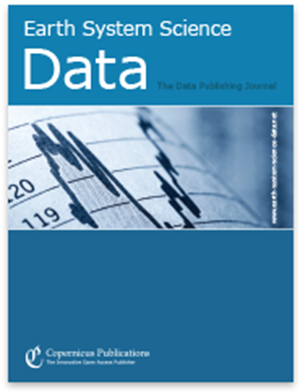Characterizing uncertainty in shear wave velocity profiles from the Italian seismic microzonation database
IF 11.6
1区 地球科学
Q1 GEOSCIENCES, MULTIDISCIPLINARY
引用次数: 0
Abstract
Abstract. This research uses a large dataset from the Italian Seismic Microzonation Database, containing nearly 15,000 measured shear wave velocity (Vs) profiles across Italy, to investigate the uncertainties in seismic risk assessment. This extensive collection allows a detailed study of the seismic properties of soil with unparalleled precision. Our focus is on evaluating Vs variations with depth within uniformly clustered areas, known as seismic microzones. These zones are carefully identified based on their spatial correlation and homogeneity in geological, geophysical, and geotechnical characteristics, which are critical for accurate prediction of seismic response. We contrast these results with clusters formed purely based on geographic survey density (here defined geographic clusters), thereby assessing the depth of our understanding of the subsurface geological and geophysical context. These results were further compared with those reported in the seismic code and literature. This study of depth-dependent Vs variations helps to refine our models of subsurface seismic behaviour. Our main discoveries show that: 1) uncertainties associated with seismic microzones (geological and geophysical clusters) are consistently lower than those identified in geographic clusters, particularly in the first 30 m of depth; 2) Vs profile variations show negligible increases in uncertainty within a certain range of correlation distances (up to about 4,500 m); 3) uncertainties for seismic microzones are lower than those previously reported in seismic codes and in the literature, indicating the effectiveness and precision of our methodological approach. The results of this study significantly improve local seismic response analysis and highlight the critical role of depth and spatial correlation in understanding seismic hazard. The dataset is available at https://doi.org/10.5281/zenodo.10885590 (Mori et al., 2024).表征意大利地震微区数据库剪切波速度剖面的不确定性
摘要本研究利用意大利地震微区数据库中的大型数据集(包含意大利各地近 15,000 个测量剪切波速度 (Vs) 剖面)来研究地震风险评估中的不确定性。通过这一庞大的数据集,可以对土壤的地震特性进行详细研究,其精确度无与伦比。我们的重点是评估被称为地震微区的均匀聚集区域内 Vs 随深度的变化。这些区域是根据其空间相关性以及地质、地球物理和岩土特性的同质性精心确定的,这些特性对于准确预测地震反应至关重要。我们将这些结果与纯粹根据地理勘测密度形成的群集(此处定义为地理群集)进行对比,从而评估我们对地下地质和地球物理背景的理解深度。这些结果与地震规范和文献中报告的结果进行了进一步比较。对随深度变化的 Vs 变化的研究有助于完善我们的地下地震行为模型。我们的主要发现表明1)与地震微区(地质和地球物理群组)相关的不确定性始终低于地理群组中确定的不确定性,特别是在深度的前 30 米;2)Vs 剖面变化在一定的相关距离范围内(最多约 4,500 米)显示出可忽略的不确定性增加;3)地震微区的不确定性低于之前地震规范和文献中报告的不确定性,表明我们的方法的有效性和精确性。这项研究的结果极大地改进了当地地震反应分析,并强调了深度和空间相关性在理解地震灾害中的关键作用。该数据集可在 https://doi.org/10.5281/zenodo.10885590 上查阅(Mori et al.)
本文章由计算机程序翻译,如有差异,请以英文原文为准。
求助全文
约1分钟内获得全文
求助全文
来源期刊

Earth System Science Data
GEOSCIENCES, MULTIDISCIPLINARYMETEOROLOGY-METEOROLOGY & ATMOSPHERIC SCIENCES
CiteScore
18.00
自引率
5.30%
发文量
231
审稿时长
35 weeks
期刊介绍:
Earth System Science Data (ESSD) is an international, interdisciplinary journal that publishes articles on original research data in order to promote the reuse of high-quality data in the field of Earth system sciences. The journal welcomes submissions of original data or data collections that meet the required quality standards and have the potential to contribute to the goals of the journal. It includes sections dedicated to regular-length articles, brief communications (such as updates to existing data sets), commentaries, review articles, and special issues. ESSD is abstracted and indexed in several databases, including Science Citation Index Expanded, Current Contents/PCE, Scopus, ADS, CLOCKSS, CNKI, DOAJ, EBSCO, Gale/Cengage, GoOA (CAS), and Google Scholar, among others.
 求助内容:
求助内容: 应助结果提醒方式:
应助结果提醒方式:


